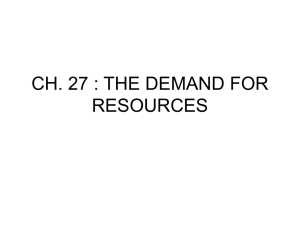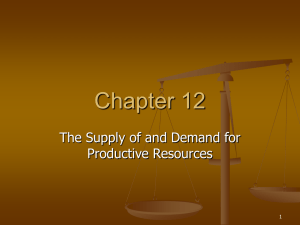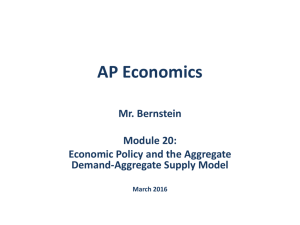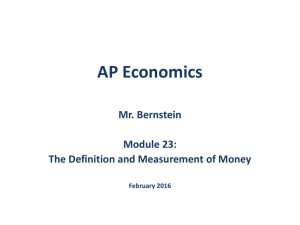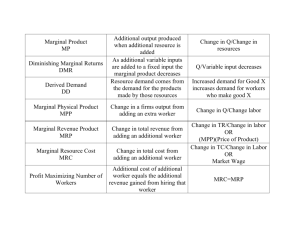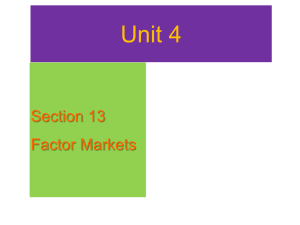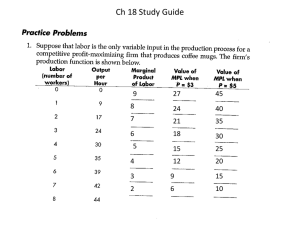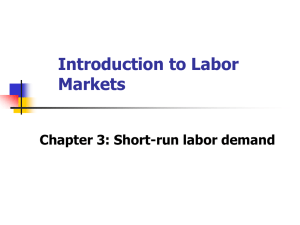Module
advertisement
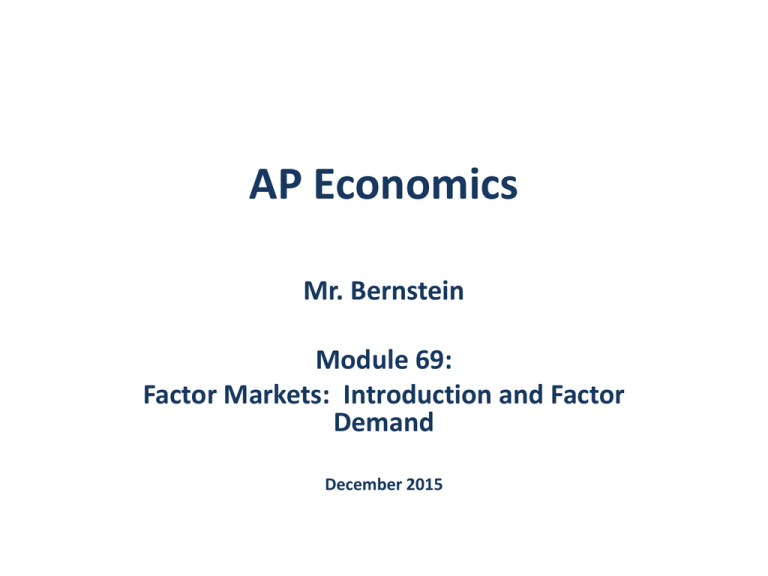
AP Economics Mr. Bernstein Module 69: Factor Markets: Introduction and Factor Demand December 2015 AP Economics Mr. Bernstein Factors of Production • AKA “resources” or “inputs” • Land • Resources provided by nature • Labor • Work done by humans • Capital • Physical Capital such as tools, buildings, machinery, etc. • Human Capital – improvement in labor due to education, training…may be the most important factor in modern econ. • Entrepreneurship • Talent for bringing together resources for innovative production 2 AP Economics Mr. Bernstein Factor Prices • Factor prices allocate resources among producers • The demand for a factor of production is a derived demand (derived from the output being producted) • Factor Distribution of Income: Payments to labor are most of economy’s total income (71% ) 3 AP Economics Mr. Bernstein Marginal Productivity and Factor Demand • MP = Marginal Product of one additional unit • ie MPL is additional output from hiring one more worker • VMP = Value of Marginal Product • ie VMPL, is additional value from hiring one more worker; = MPL x P • VMPL = MRP if Labor Market is perfectly competitive but will be > MRP in imperfect Labor Market • VMP curve (or MRP curve) is the demand curve for a factor • If a unit of labor costs W, the Profit-Maximizing Rule is to hire worker if VMPL >= W…~= MRP = MRC (aka MFC) • Law of Demand applies in factor markets 4 AP Economics Mr. Bernstein What Causes Shifts in Factor Demand Curves? • Change in price of goods • • • • If price of product rises, VMP (MRP) also rises Example: NFL players worth more if league’s TV package rises Example: Airline pilot is worth less as ticket prices fall Labor demand is derived from product demand • Change in supply of other factors • Factors are often paired (ie labor and capital) so increase in supply of one increases VMP (MRP) of the other • Change in technology • Advances in technology increase VMP (MRP) 5


